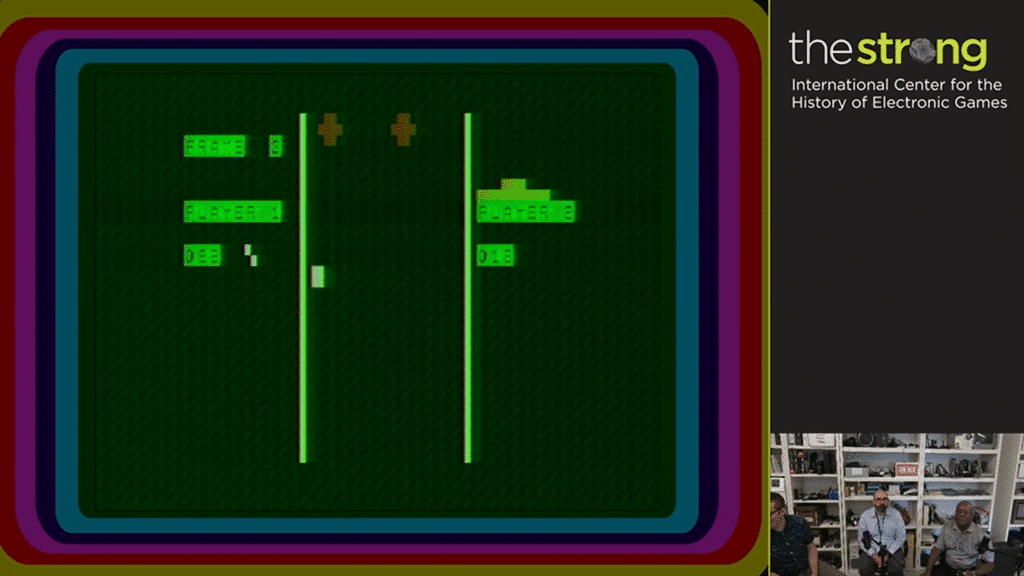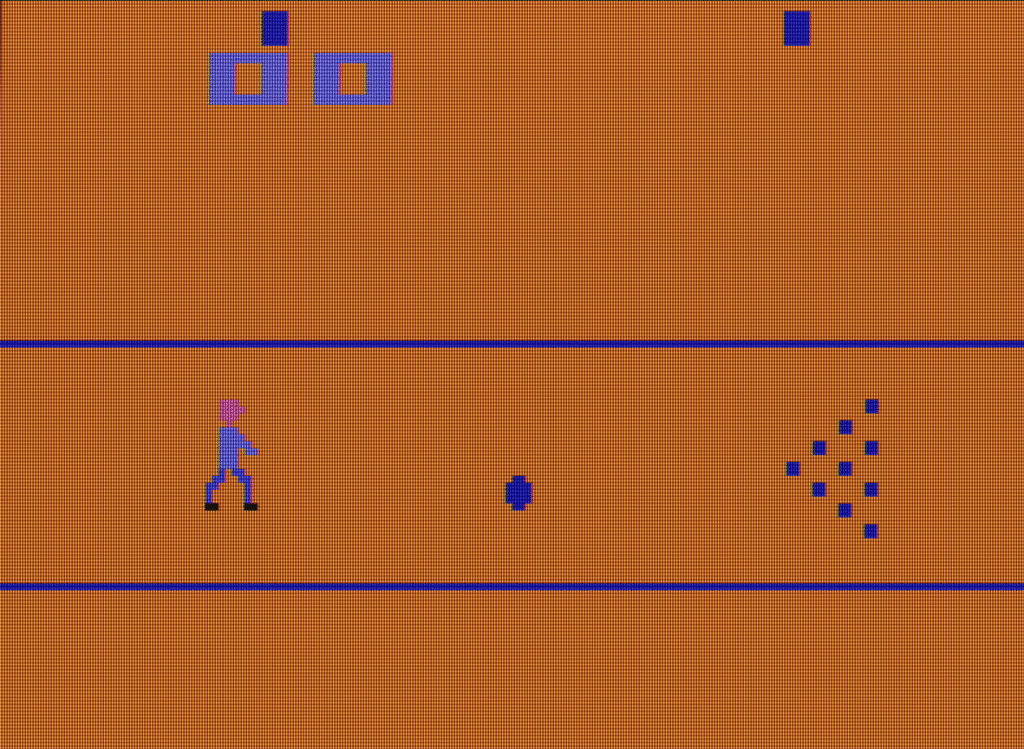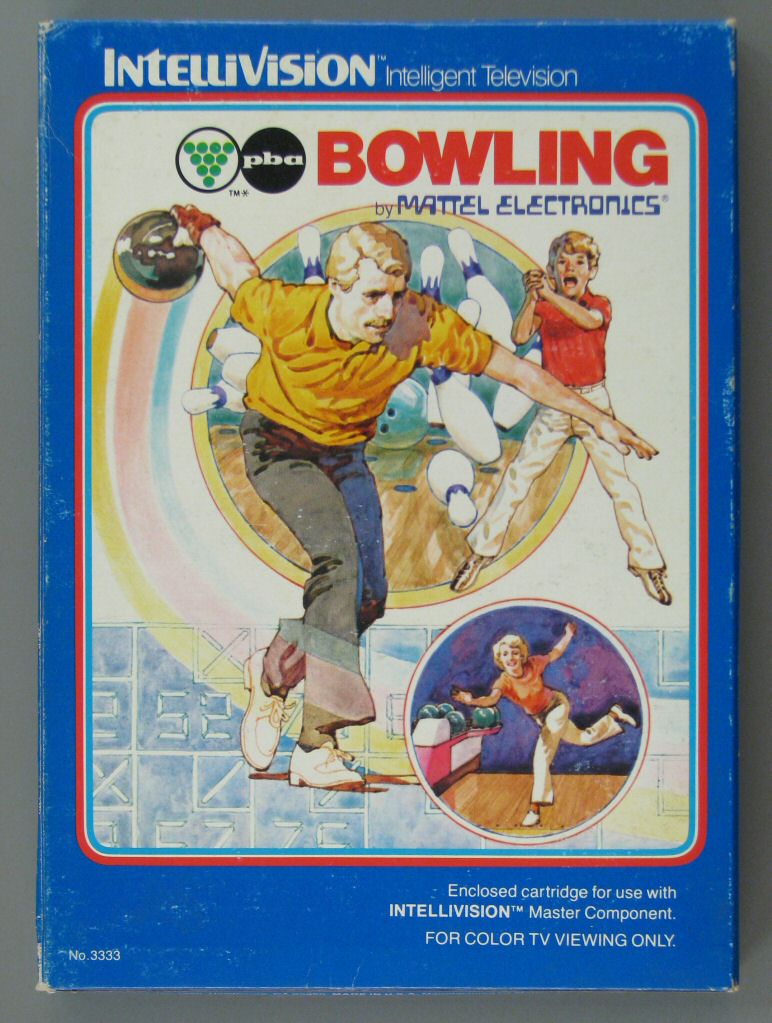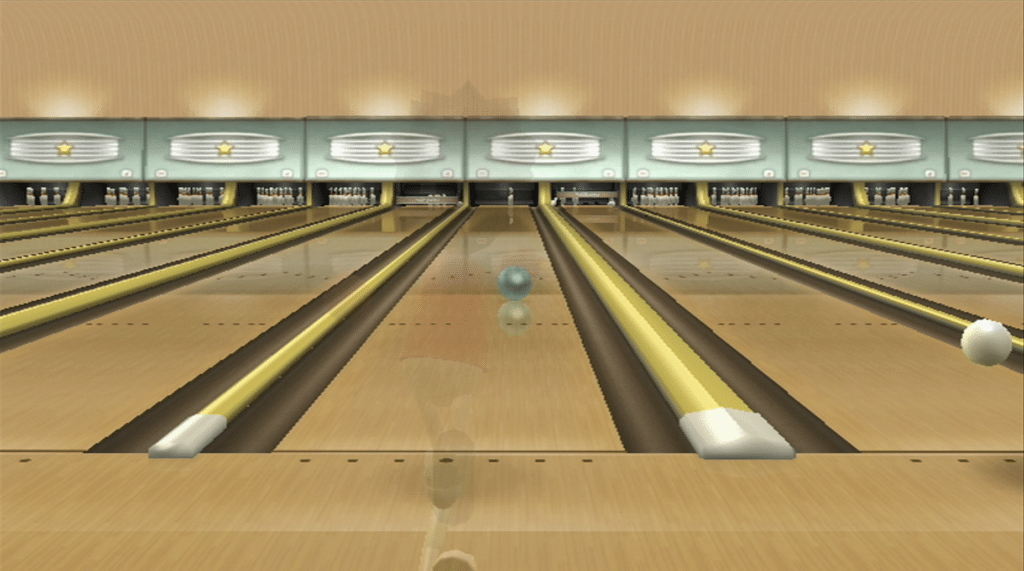There has always been a close connection between bowling and video games for me. As a kid, I spent many nights playing with one of my brothers at our local candlepin bowling center. While my father hurled softball-sized balls down the bowling alley’s lanes, my brother and I often rolled digital bowling balls on a video game in the alley’s arcade. What I didn’t realize then was that while many of the first commercial video games of the 1970s centered on sports themes such as tennis, hockey, and racing—bowling wasn’t far behind.

Bowling, a game in which players roll a ball down a narrow alley to knock down pins, traces its roots back to ancient Egypt and Europe. Centuries later, the widespread adoption of the automatic pinsetter in the 1950s fueled a surge in bowling’s popularity in the United States. Not surprisingly, in the mid to late 1970s, when game developers needed to produce a growing library of games for new cartridge-based game systems, many tried to translate bowling to video game screens. As Ed Smith, the cocreator of the APF MP-1000 video game console told me, when the team at APF talked about making games for the system, in addition to creating versions of popular arcade games, they also wanted to create “everyday life” games that reflected real world activities such as bowling. The sport’s familiarity to millions of new video game players and its simple, straightforward gameplay proved to be a perfect theme for home video gaming.

The first of these bowling video games arrived in 1977 built into the RCA Studio II console. Its simple approach to gameplay included a top-down view of a large, square pixel ball and a set of 10 smaller square pins. The ball moved back-and-forth on the screen, challenging players to watch it closely and time the ball’s release at just the right moment to send it down the alley at the pins. Fairchild Channel F’s Bowling (1978), Odyssey2’s Bowling/Basketball (1978), and APF’s Bowling (1978) games all presented players with a similar top-down view of a ball and pins. But Fairchild’s version of the game provided players with the ability to curve the ball as it sped toward the pins. In addition to influencing the trajectory of the ball, the Atari Video Computer System’s Bowling (1979) allowed players to position and control the on-screen figure of a bowler who swung their arm and launched the ball down the lane.

As manufacturers released new and more powerful home consoles, game developers produced more complex and innovative bowling games. PBA Bowling (1981) for the Mattel Intellivision allowed players even greater control over gameplay by choosing ball weight, bowling hand, and the slickness of the lane. The Intellivision’s improved graphics also offered a new visual perspective that switched from a side view of the bowler rolling the ball to a front view of the pins as the ball moved closer and struck them. Championship Bowling (1989) for the Nintendo Entertainment System, Super Bowling (1992) for the Super Nintendo, and Championship Bowling for the Sega Genesis (1993) all helped establish the front-facing view of the lane and pins and the on-screen system to gauge and control ball placement, power, and spin that became a standard for most bowling games released after them.
Bowling games remained a staple on video game consoles throughout the 1990s and into the 2000s. Many of these games focused on painstakingly simulating professional-style ten-pin bowling such as Brunswick Circuit Pro Bowling (PlayStation, 1998) and AMF Bowling 2004 (Xbox, 2004). But the most innovative game appeared on Nintendo’s 2006 Wii video game console.

The company’s Wii Sports (2006) revolutionized the way we played video game bowling. Instead of needing to memorize a series of button and directional pad presses to throw a digital bowling ball, Wii Sports bowling distilled the sport down to its essential elements. Using a motion-sensitive Wii Remote, players bowled by swinging their arm as they would in real-life bowling. As game scholar Jesper Juul describes in his book A Casual Revolution: Reinventing Video Games and Their Players, Wii Sports bowling was part of a “moment in which the simplicity of early video games [was] being rediscovered.” This simplicity made bowling and other video games for the system much more accessible to those who were intimidated by the complexity of previous game controllers. Packed-in with a console that sold more than 100 million units, Wii Sports brought video game bowling into more homes (and, according to many news reports, senior centers) than any game released before it.
Although many people still play Wii Sports bowling today, in 2022 Nintendo released the sequel Nintendo Switch Sports for its Switch console. Created to be played with the Switch’s Joy-Con controllers which also use motion-sensing technology, Nintendo Switch Sports introduced a new generation to video game bowling.
Over the last four decades, as home consoles became more powerful and some players hungered for more sophisticated games, bowling games, like many other types of video games, became increasingly complex to play. But as Wii Sports, Nintendo Switch Sports, and a chance to play a 40-year-old bowling video game with Ed Smith remind me, sometimes the simplest (and often the most accessible) forms of play can be the most fun.


